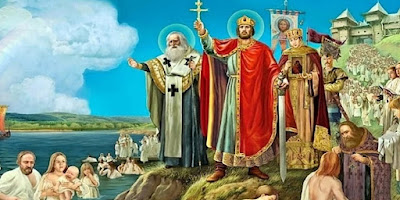Contemporary Byzantine scholar George of Trebizond (1395 - 1486) supported this view. Another who aligned with the new Caesar was Gennadius Scholarius, whom Mehmed chose as the new Patriarch of Constantinople.
Note that Mehmed did not declare Eastern Orthodoxy heretical. He was actually quite magnanimous to his potential opposition. For example, when he then turned his attention to the royal family, he did not simply execute anyone who might have provided the nucleus of an insurrection and coup.
The defeated Emperor Constantine XI Palaiologos, who had died during the siege, had no heirs. He had nephews of a deceased brother who would have been next in line. As was mentioned in the post on the Janissaries, a Muslim practice called devşirme (the "ş" is pronounced like "sh") took children of conquered peoples and converted them, training them to be loyal Muslims.
Mehmed took at least two boys who were purportedly related to Constantine, converted them to Islam and renamed them Hass Murad Pasha and Mesih Pasha. Hass—a title meaning "private" or "personal"—became beylerbey ("lord of lords"), the commander-in-chief of the Balkans in 1468. (The illustration shows his signature.) Mesih (1443 - 1501) became Grand Admiral of the Ottoman Navy.
We do not know the parentage of the two young men who rose so high in the sultan's favor. Contemporary Ottoman chronicles claim they were nephews of Constantine, but offer different names for their father. Still, Murad and Mesih were lucky that Constantine was succeeded by Mehmed and not another prominent Greek noble, who might have followed the Byzantine tradition of eliminating all possible opposition through incarceration, execution, or blinding.
It would be nice to think that the two boys had not only good lives but peaceful ends. That was not to be the case, however. I'll give you the rundown on their careers tomorrow.



















